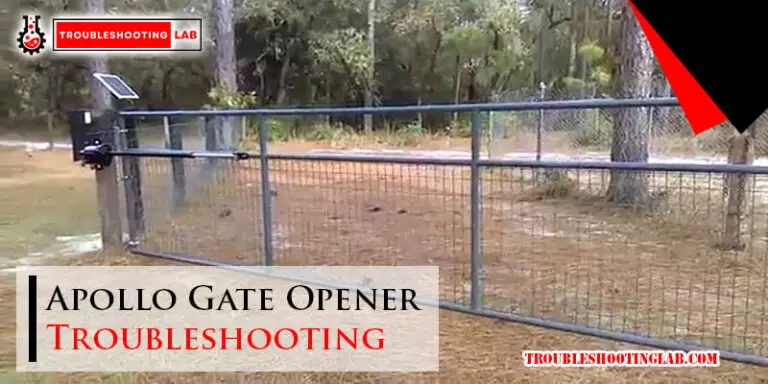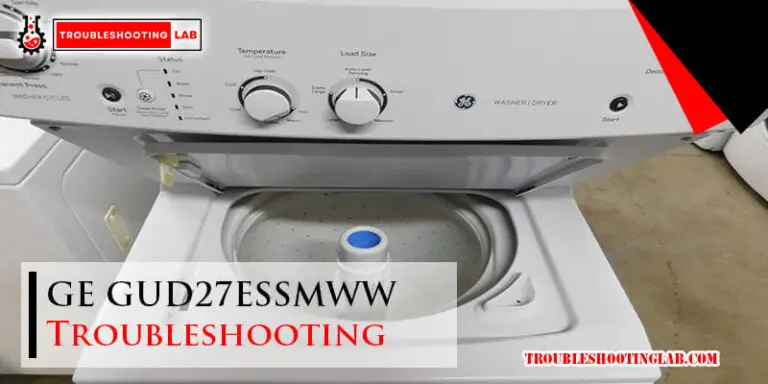General Electric Dryer Troubleshooting: Quick Fixes & Tips
Are you tired of dealing with your General Electric dryer acting up just when you need it the most? You’re not alone, and you’ve come to the right place.
Troubleshooting can feel overwhelming, but with the right guidance, you can address many common issues quickly and easily. Imagine saving time, money, and the frustration of damp clothes hanging around your home. Understanding what’s going wrong with your dryer empowers you to take control and restore your appliance to its full potential.
You’ll discover straightforward solutions to common problems, turning you into a confident fixer. Dive in and find the answers to your dryer dilemmas, so you can enjoy the convenience and reliability of your General Electric dryer once again.

Credit: www.callahansappliance.com
Common Dryer Issues
General Electric dryers are known for their reliability, but like any appliance, they can run into issues. Whether your dryer is not starting, not drying clothes effectively, or making excessive noise, these common problems can be frustrating. Understanding these issues and knowing how to troubleshoot them can save you time and money. Let’s dive into some typical dryer problems and see how you can tackle them.
Dryer Not Starting
Is your dryer refusing to start? First, check if it’s plugged in properly. Sometimes, all it takes is a quick reconnection to get things moving.
Next, examine the door switch. If it’s faulty, the dryer won’t start. Replacing a broken switch is usually straightforward.
If the issue persists, consider looking at the thermal fuse. If this is blown, the dryer won’t start. Replacing it is a common fix.
Clothes Not Drying
Are your clothes coming out damp? First, ensure the lint filter is clean. A clogged filter can restrict airflow and affect drying performance.
Check the venting system. Blocked vents can prevent moisture from escaping. Cleaning them might solve the problem.
Inspect the heating element. If it’s not working, your clothes won’t dry. Replacing it might be necessary.
Excessive Noise
Is your dryer sounding like a construction zone? Loose or worn drum rollers might be the culprit. Tightening or replacing them can quiet things down.
Check the blower wheel for obstructions. Objects caught in it can cause loud noises. Clearing them out can make a big difference.
Consider the drive belt. If it’s worn or broken, it can make noise. Replacing it is often the solution.
Overheating Problems
Is your dryer too hot to handle? This can be dangerous, so act quickly. Start by cleaning the lint filter and vents to improve airflow.
Consider the cycling thermostat. A malfunctioning thermostat can cause overheating. Replacing it might be necessary.
Finally, examine the heating element. If it’s stuck on, it can overheat the dryer. A replacement might be the answer.
Have you ever faced a dryer issue and felt overwhelmed? With these tips, you can tackle common problems confidently. Always prioritize safety and consult a professional if needed. What troubleshooting story do you have to share? Let us know in the comments!
Basic Maintenance Tips
General Electric dryers are reliable but need regular care. Basic maintenance ensures your dryer runs smoothly and efficiently. These simple tasks can prevent bigger issues down the line.
Cleaning The Lint Filter
Lint filters catch fibers from clothes. A clogged filter reduces air flow. Clean it after each use. Remove the filter from the dryer. Scrape off lint with your fingers or a brush. Rinse it under warm water if needed. Dry it completely before placing it back.
Inspecting The Vent System
The vent system helps remove moist air. Blockages can cause longer drying times. Check the vent hose for obstructions. Use a flashlight to see inside. Clear any debris using a vacuum or brush. Ensure the vent is securely connected.
Checking The Drum Seal
The drum seal keeps clothes from snagging. Inspect it for tears or wear. Open the dryer door and feel around the drum. Replace the seal if you find any damage. A good seal helps retain heat.
Lubricating Moving Parts
Dryer parts need lubrication to move smoothly. Find the hinges and rollers. Apply a small amount of appliance-safe lubricant. Avoid over-lubrication. Wipe off any excess. Proper lubrication reduces noise and wear.
Troubleshooting Power Issues
Experiencing power issues with a General Electric dryer can be frustrating. Ensure the dryer is plugged in and the circuit breaker is on. Check the power cord for any visible damage and confirm the door is properly closed for the dryer to start.
Troubleshooting power issues in your General Electric dryer can be a daunting task, but it doesn’t have to be. Power problems are common and can often be resolved with a few simple checks. Before you call in a professional, let’s look at some practical steps you can take.Checking Power Supply
First, ensure your dryer is properly plugged in. It sounds simple, but sometimes the plug can be loose or knocked out of the socket. Next, check your circuit breaker. Have you had any recent power surges that might have tripped it? Resetting the breaker can sometimes solve the issue. Finally, examine the power cord for any visible damage. Frayed or broken wires can prevent your dryer from receiving power.Inspecting The Thermal Fuse
The thermal fuse is a crucial safety component. It can cut off power to prevent overheating, but if it’s faulty, your dryer won’t start. Locate the thermal fuse on your dryer. You might need to consult your user manual for its exact location. Once found, use a multimeter to check its continuity. A broken fuse will show no continuity and needs replacing. Remember, replacing it is simple and can save you a costly service call.Testing The Door Switch
The door switch is another critical factor in power issues. If your dryer thinks the door is open, it won’t start. Open the dryer door and listen for a click when you press the switch. No sound? The switch might be faulty. Use a multimeter to test the switch’s continuity. A non-working switch is an easy fix with a new part. Have you ever solved a power issue with a simple check? It’s empowering to fix things yourself, isn’t it? Your dryer might just need a little attention to get back to its efficient self.Dealing With Heating Problems
General Electric dryers often face heating issues. Simple checks like cleaning the lint filter can help. Consider inspecting the thermostat and heating element for proper function.
Dealing with heating problems in your General Electric dryer can feel like a major inconvenience, especially when your laundry starts piling up. You might notice your clothes aren’t drying as efficiently or the dryer isn’t producing any heat at all. Tackling these issues might seem daunting, but with some practical steps, you can diagnose and potentially fix the problem.Testing The Heating Element
The heating element is the heart of your dryer’s heating system. If your dryer isn’t producing heat, this component might be at fault. Start by unplugging your dryer for safety. Then, locate the heating element, usually found at the back of the dryer. Using a multimeter, test for continuity. A broken circuit means the heating element is faulty and needs replacement. Have you ever had to replace a bulb? It’s a similar process, only a bit more technical.Examining The Thermostat
The thermostat regulates the temperature inside your dryer. If it’s malfunctioning, your dryer might overheat or not heat at all. First, ensure your dryer is unplugged. Locate the thermostat, typically near the heating element. Remove it and test with a multimeter. No continuity means the thermostat isn’t working. Replacing it could restore your dryer’s heating function. Have you checked your home’s thermostat when the temperature feels off? It’s a similar troubleshooting approach.Replacing The Temperature Sensor
The temperature sensor ensures your dryer maintains the right heat levels. A faulty sensor can lead to insufficient drying. Begin by safely unplugging the dryer. Find the sensor, usually near the thermostat. Test it with a multimeter for continuity. If it fails, replace it. This small part can have a big impact on your dryer’s performance. Have you ever replaced a battery to get your gadget working again? It’s like giving your dryer a fresh start. Regular maintenance and troubleshooting can save you time and money. Have you tackled any dryer issues before? Share your experiences and tips in the comments below. Your insights could help others facing similar challenges!Fixing Noise And Vibration
Experiencing noise and vibration with your General Electric dryer can indicate mechanical issues. Troubleshoot by checking for loose parts or worn belts. Regular maintenance helps in reducing these disturbances and prolongs dryer life.
Fixing noise and vibration in a General Electric dryer can be straightforward. Unusual sounds often indicate a problem. These issues can disrupt daily life. Addressing them promptly prevents further damage. This guide helps identify common noise sources. Following these steps can ensure your dryer runs smoothly.Balancing The Dryer
An unbalanced dryer can cause noise. Check if it’s level on the ground. Use a spirit level to verify. Adjust the feet if needed. Turn them clockwise or counterclockwise. Ensure the dryer stands firm. This simple step can reduce vibration significantly.Inspecting The Drum Rollers
Worn drum rollers can cause noise. Open the dryer’s top panel. Locate the drum rollers inside. Inspect them for signs of wear. Rollers should spin freely. Replace if they’re damaged or stuck. New rollers can silence unwanted sounds.Checking The Motor Bearings
Motor bearings wear out over time. Listen for a grinding noise. This often signals bearing issues. Unplug the dryer before inspection. Remove the motor cover. Inspect the bearings for wear. Replace them if necessary. New bearings can make a big difference.Addressing Dryer Odors
Dryer odors can be frustrating. General Electric dryer troubleshooting can help identify the source. Regular cleaning of lint traps and vents often resolves unpleasant smells.
Addressing odors in your General Electric dryer can be a straightforward process, one that ensures your clothes come out smelling fresh every time. These odors can often sneak up on you, transforming what should be a comforting scent into something unpleasant. By tackling the root causes, you can maintain a pleasant-smelling laundry routine.Cleaning The Drum
Regularly cleaning the drum is crucial for keeping odors at bay. Residue from dryer sheets or fabric softeners can build up over time, causing musty smells. A simple wipe down with a mixture of vinegar and water can work wonders. Consider using a soft cloth to reach all the nooks and crannies inside the drum. This ensures that no residue is left behind, which could continue to emit odors. You might be surprised at how much better your dryer smells after a good cleaning session.Using Odor Neutralizers
Odor neutralizers can be a game-changer for persistent smells. Products like baking soda or activated charcoal are great at absorbing and neutralizing unwanted scents. Place a small container inside the dryer when it’s not in use to tackle lingering odors. Essential oils can also add a pleasant aroma without overpowering your senses. Just add a few drops on a cloth and toss it in for a quick cycle. But, remember to choose oils that won’t stain or leave a residue on the drum or your clothes.Preventing Mold Growth
Mold is one of the most common culprits behind unpleasant dryer odors. Moist environments inside the drum create the perfect breeding ground for mold. Ensure you leave the dryer door slightly open after each use to promote air circulation. Regularly check and clean the lint filter and vent. A clogged vent not only causes odors but also poses a fire hazard. Have you considered setting a monthly reminder to inspect these areas? It’s a small step that can prevent big problems. By implementing these simple strategies, you can keep your dryer smelling fresh and functioning efficiently. What other tips have you found effective in addressing dryer odors? Share your experiences in the comments below!When To Call A Professional
Strange noises or persistent issues with your General Electric dryer? It might be time to call a professional. Unresolved problems can lead to costly repairs if ignored.
When facing dryer issues, knowing when to call a professional matters. Some problems need expert hands. Attempting to fix them alone can lead to bigger issues. Let’s explore situations where professional help is essential.Identifying Complex Issues
Complex dryer problems can be hard to spot. Strange noises, persistent issues, or recurring breakdowns signal deeper problems. These signs often need a trained eye to diagnose correctly. Professionals use tools and experience to find hidden faults. They can quickly identify the root cause.Safety Considerations
Safety should never be overlooked. Repairing a dryer involves dealing with electricity and heat. Both pose serious risks if mishandled. Professionals are trained to follow safety protocols. They ensure repairs are conducted without danger. This keeps you and your home safe.Evaluating Repair Costs
Repair costs can sometimes be tricky to estimate. A professional can provide an accurate assessment. They determine if a repair is cost-effective or if replacement is better. This helps in making informed decisions. Avoid unnecessary expenses with expert advice.
Credit: www.youtube.com
Preventive Care Practices
Troubleshooting a General Electric dryer involves checking key components like the lint filter, power supply, and thermal fuse. Regular maintenance helps prevent common issues, ensuring efficient operation and safety. Follow the manual’s guidelines for optimal care.
Preventive care practices for your General Electric dryer are essential for ensuring efficient operation and prolonging the appliance’s lifespan. Many of us learn this the hard way, when a simple oversight leads to costly repairs. By adopting a regular maintenance routine, implementing energy-saving measures, and focusing on extending the dryer’s lifespan, you can avoid common pitfalls and ensure your dryer runs smoothly.Regular Maintenance Schedule
Setting up a regular maintenance schedule is like giving your dryer a health check-up. Start by cleaning the lint filter after every use. This prevents clogs and reduces the risk of fire. Don’t forget to inspect the vent and ductwork every few months. A clogged vent can lead to longer drying times and unnecessary energy use. Clear out any debris to keep air flowing freely. Check the dryer’s drum and seals for wear and tear. Simple fixes now can prevent bigger issues down the road.Energy-saving Tips
Who doesn’t love saving on energy bills? Start by drying full loads whenever possible. This maximizes efficiency and reduces the number of cycles needed. Use lower heat settings for less bulky items. It might take a bit longer, but it uses significantly less energy. Consider using dryer balls to reduce drying time. They help separate clothes, allowing hot air to circulate more effectively.Extending Dryer Lifespan
Taking steps to extend your dryer’s lifespan is a smart move. Avoid overloading your dryer; it strains the motor and can lead to breakdowns. Keep the dryer in a well-ventilated area. Overheating can be a silent killer for appliances. Schedule professional servicing every couple of years. A professional can catch issues you might miss, ensuring your dryer stays in top condition. Have you ever overlooked a small maintenance task that led to a bigger issue? Share your experiences and tips in the comments below!
Credit: www.applianceaid.com
Frequently Asked Questions
Why Is My Ge Dryer Not Starting?
Check the power source. Ensure the dryer is plugged in. Verify circuit breaker is on.
How Do I Reset My Ge Dryer?
Unplug the dryer for five minutes. Plug it back. This resets the control system.
Why Is My Ge Dryer Not Heating?
Inspect the thermal fuse. Also, check the heating element. Replace any faulty parts.
What Causes A Ge Dryer To Make Noise?
Loose parts or worn drum rollers often cause noise. Tighten screws or replace parts.
How To Clean The Lint Filter In A Ge Dryer?
Remove the lint filter. Use a brush to clean lint. Wash with warm, soapy water.
Conclusion
Troubleshooting your GE dryer doesn’t have to be complicated. Start with basic checks like power and settings. Ensure the lint trap is clean for better airflow. Examine any unusual noises or smells immediately. Consider inspecting the belt or motor if problems persist.
Consult the manual for guidance on specific issues. Sometimes, professional help is necessary for complex repairs. Regular maintenance can prevent future breakdowns. Keep your dryer running efficiently with these simple tips. Save time and avoid frustration by staying proactive. Your dryer deserves care to last longer.






